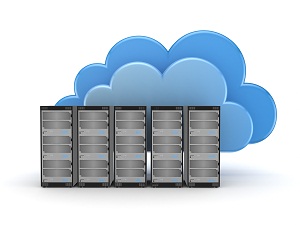
Cloud for Data Center Efficiency, Performance and Availability
Data centers deliver critical services for businesses. Trying to maximize design efficiency in a data center can be a challenge, however, and focusing only on power and cooling strategies is short-sighted. There are other efficiencies that enhance a data center’s ability to cost effectively adapt to business strategy changes and increased computing demand.
A data center solution should be designed with five key goals:
- Guaranteed performance.
- Time efficiency.
- Space optimization.
- Resource optimization and
- Sustainability.
Organizations are struggling to manage big data and adopt newer applications and technologies while addressing the environmental and financial conservation pressures.
Since the cloud business model relies on high data security and operational efficiency, lean operating principles are often employed to improve financial performance. This makes the cloud a practical solution for businesses looking to lower costs, improve their risk profiles, and increase their agility and efficiency, allowing them to delay and reduce capital expenditures.
Moving toward a virtualized environment, whether through virtualization of physical servers or by moving applications into the cloud, helps consolidate systems and reduce overall IT energy costs. It can also transform some capital expenses into operational expenses and help businesses realize savings in administration, licensing, maintenance, and reduced downtime.
Businesses looking to improve their data center cost and efficiency by transitioning to the Cloud can realize four key benefits:
- Increased Computing Efficiency: Cloud computing often allows for more computing per watt of power consumed by better utilization of applications and servers.
- Manage Redundancy: Applications can run on multiple servers in multiple locations and failover to another location instantly if there is a problem.
- Financial Value to the Business: Cloud computing supports alignment between investment and productivity by providing more options for businesses to access the latest technologies, while reducing the need for large up-front capital expenditures (CAPEX). Assets that would have required a significant capital infusion are now billed as operational expenditures (OPEX), freeing up funds for other projects that can help drive revenue and growth.
- Right-sized Power and Cooling Systems: Remaining physical equipment can now be repurposed and sized to meet specific needs, whether it’s critical data that must be managed on-site or even basic storage backup that doesn’t have stringent uptime requirements.
With businesses becoming increasingly reliant on technology for daily operations, new and innovative ways of computing within the data center are needed. Data centers must find efficient and sustainable ways to operate and adopt a cost and risk model that fits corporate goals and objectives. As an alternative to updating physical infrastructure for increased efficiency, cloud computing is a viable method that can help reduce fixed costs associated with a facility’s power, cooling, and hardware, allowing for greater agility and growth. Data center managers should feel empowered to right size their infrastructures and budgets to align costs with processing needs, resulting in a greener, more efficient footprint.
To learn more about how you can increase your data center efficiency, Contact SNP Technologies here




